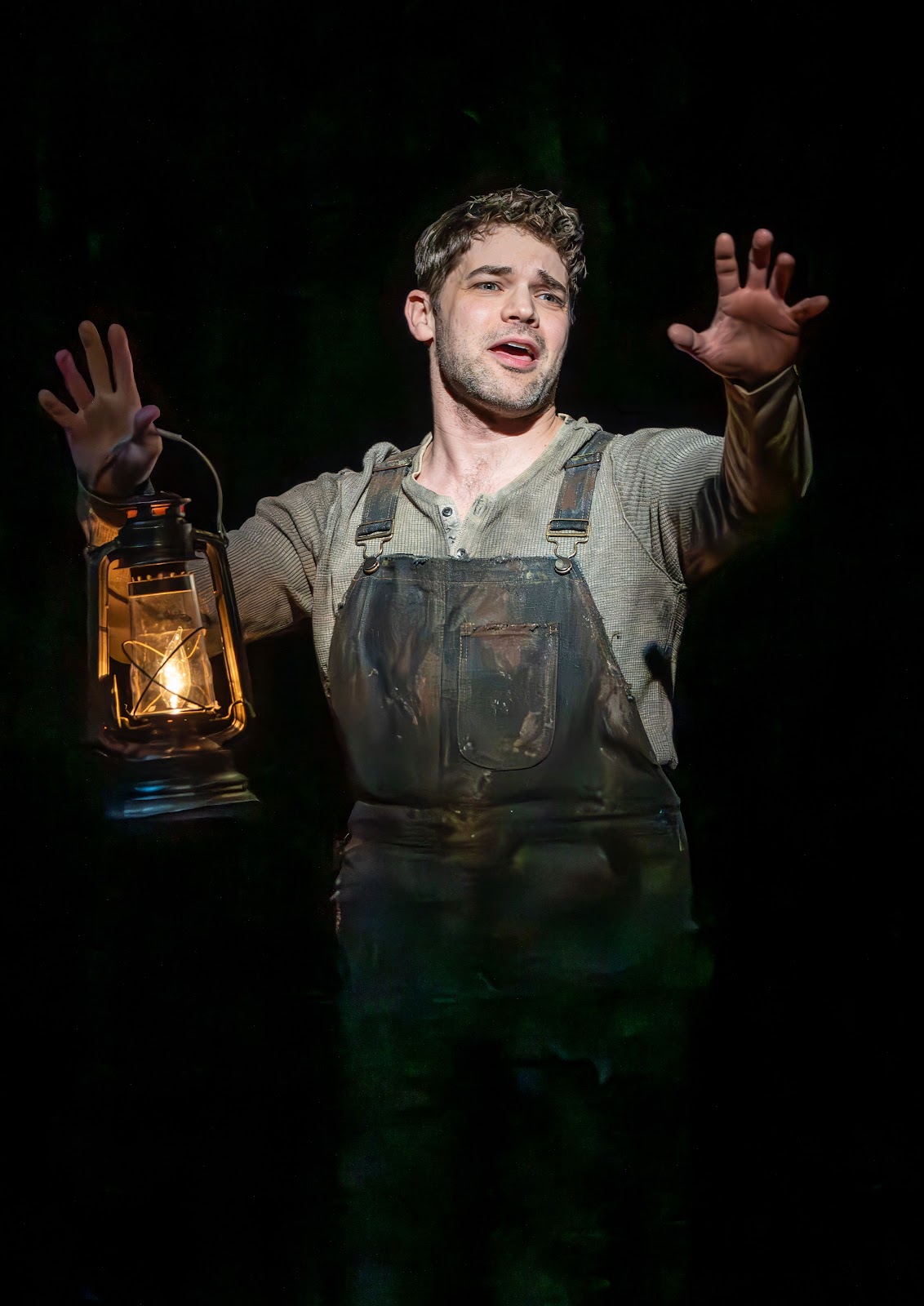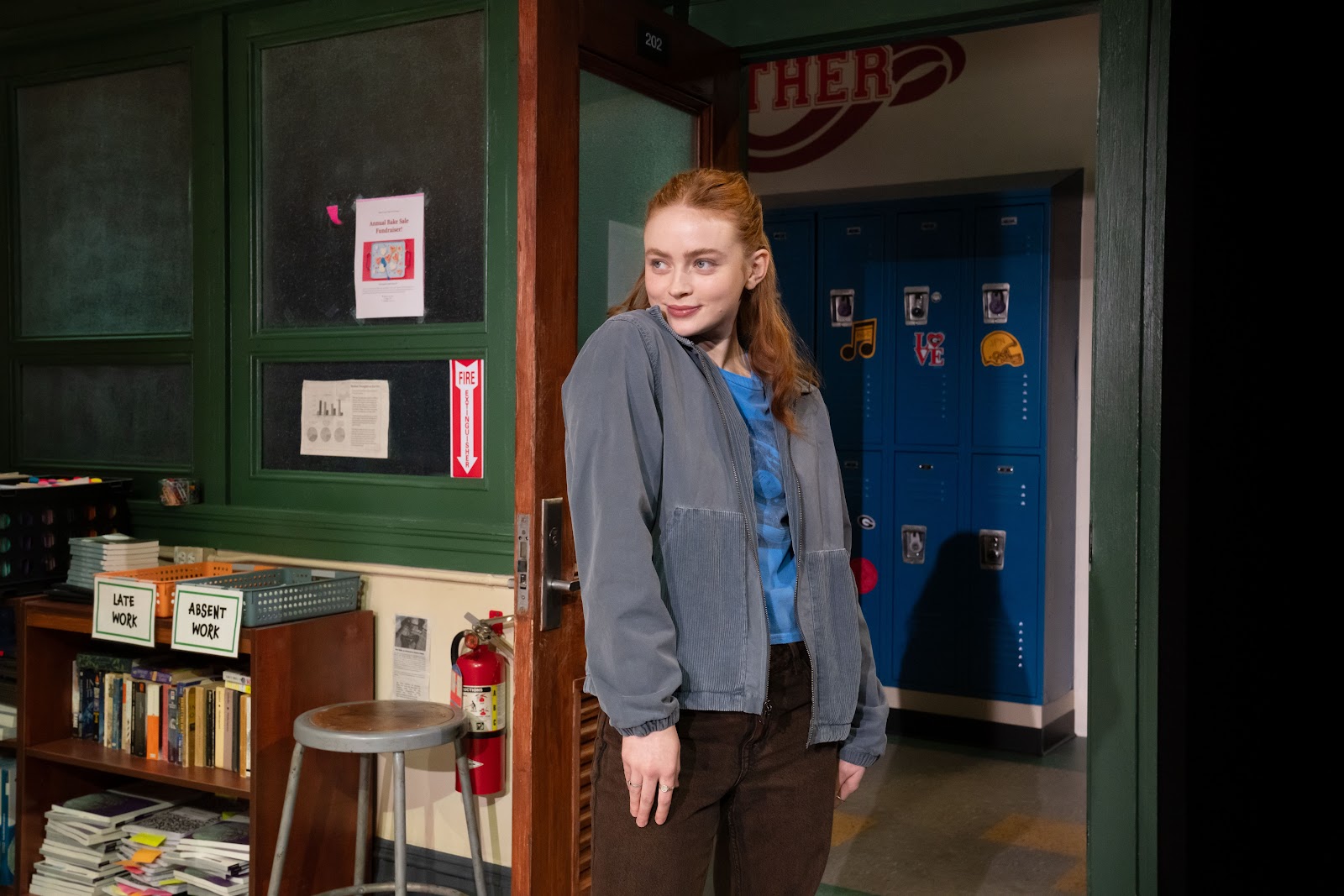I was disappointed by the production of Floyd Collins at Lincoln Center’s Vivian Beaumont Theater. I have wanted to see this musical since 2006 when I heard Brian Stokes Mitchell sing “How Glory Goes” on his first, self-titled, CD. He sang it with such feeling that I got up to check the disc case to find out more about it.
I learned that the music and lyrics were by Adam Guettel and that it was from a musical called Floyd Collins, which I had not heard of. It’s easy to understand why it was unfamiliar to me. It premiered at Playwrights Horizons in 1996 and played for only 26 performances. From time to time after I became aware of the show I would see it listed for performances in regional theatres but I had a long wait for it to make its Broadway debut this spring.
It wasn’t the acting and singing or the production values that disappointed me. It was Tina Landau’s book, which made the show seem both too long and at the same time underdeveloped. This is her second show on Broadway this season. She wrote the book for Redwood, which was wonderfully staged but suffered with her clichéd story.
In the case of Floyd Collins Landau, who also directs and provided new lyrics, had a real life story to work from, and one that was certainly dramatic. In the Kentucky hills in 1925 Floyd Collins, a farmer and cave explorer, became the most famous man in the country for a time after becoming trapped 200 feet underground for 14 days in what was called Sand Cave. His well-being and the attempts to free him not only made national news but attracted crowds at the cave’s opening as well as opportunists and other vendors who set up attractions that turned the rural area into a country fair and carnival with fireworks and balloons.
Broadway favorite Jeremy Jordan left his role as Gatsby in that Broadway show to take a pay cut to play Floyd. His enthusiasm for the role is obvious in his performance but enthusiasm was less obvious in the audience. Many, many seats were empty the night I was there.
Jordan nicely spans Floyd’s emotional journey, which is impressive since he portrays most of it from a tilted platform representing his confined condition. (Stark set and lighting by dots and Scott Zielinski.)
Going into the cave at the start Floyd is enthusiastic. After hollering down the opening and hearing an echo he imagines a bright future for himself.
“My losing streak is over, boy. Gonna find my treasure underground. This cavern’s gonna be the biggest attraction ‘round these parts and this time folks are gonna pay me to tour her wonders. They’ll be tearing up this mountain. They’ll be camping in the snow.”
He sings his first solo, “The Call”:
If I follow that sound,
I could find what I’m lookin’ for.
It could be glory callin’,
Callin’ me.
He retains his optimism for a few days even after his left ankle gets crushed under a huge rock, rendering him unable to escape. His younger brother, Homer (Jason Gotay), is able to reach down to comfort him and his young sister, Nellie (singer/songwriter Lizzy McAlpine in her Broadway debut), father, Lee (Marc Kudisch), and the town folks keep vigil above ground.
A reporter from the Louisville Courier-Journal, Skeets Miller (Taylor Trensch), comes to interview Floyd. He’s small in size — like a mosquito, hence his name — so he is able to talk to Floyd from just above where he’s trapped and becomes emotionally involved, so much so that he eventually crawls down with a jack and crowbar, risking his own life, to try to rescue Floyd. After his story is published interest in Floyd picks up quickly. (In real life Miller won a Pulitzer for his coverage of the tragedy.)
By the start of the second act reporters have come from New York City, Chicago, Bowling Green, Butte, Savannah and more to report on the man “buried while still alive.” Dressed in navy suits with matching bowler hats (costumes by Anita Yavich) they do a little syncopated dance in their zeal (dance sequences by Jon Rua).
All the while Floyd is losing hope as the days pass until he comes to accept this is the end for him and he calls upon God: “I’m ready now, Lord. I know I weren’t no Sunday school mama’s boy. But faith is hoping for something, believing what you can’t see.” Then he shouts: “I HAD FAITH ALL MY LIFE. I want to ask you something.”
Which he does in the lovely “How Glory Goes” in which he wonders what heaven will be like:
“Is it warm?
Is it soft against your face?
Do you feel a kind ‘a grace inside the breeze?
Will there be trees?
“Is there light?
Does it hover on the ground?
Does it shine from all around,
or just from you?”
As he continues his final exploration, this one in song and imagination, he sits up, finally free in impending death.
“Are we ev’rywhere?
Are we anywheres at all?
Do we hear a trumpet call us
and we’re by your side?
“Will my mama be there waitin’ for me,
smilin’ like the way she does
an’ holdin’ out her arms,
an’ she calls my name?
She will hold me just the same.”
Miller comes on to give his final news report: “The prisoner’s body was wedged so tightly there was no longer any room at all between his chest and the cave ceiling. A cave cricket perched on his nose, nibbling away at the tip. The cause of death was listed as starvation and exhaustion. The carnival at Sand Cave packed up and went home.”
Floyd finishes his song:
“Only heaven knows how glory go,
what each of us was meant to be.
In the starlight, that is what we are
I can see so far.”
He stands, walking into the open space, lifts his arms and turns in a slow circle, as if ascending into the light around him and follows it until he disappears into it as the stage lights blacken.











